
William Edward Burghardt Du Bois was an American sociologist, socialist, historian, and Pan-Africanist civil rights activist.

Nellallitea "Nella" Larsen was an American novelist. Working as a nurse and a librarian, she published two novels, Quicksand (1928) and Passing (1929), and a few short stories. Though her literary output was scant, she earned recognition by her contemporaries.
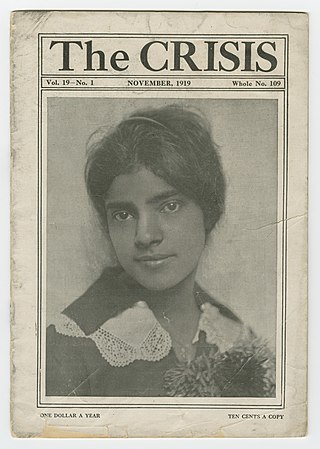
The Crisis is the official magazine of the National Association for the Advancement of Colored People (NAACP). It was founded in 1910 by W. E. B. Du Bois (editor), Oswald Garrison Villard, J. Max Barber, Charles Edward Russell, Kelly Miller, William Stanley Braithwaite, and Mary Dunlop Maclean. The Crisis has been in continuous print since 1910, and it is the oldest Black-oriented magazine in the world. Today, The Crisis is "a quarterly journal of civil rights, history, politics and culture and seeks to educate and challenge its readers about issues that continue to plague African Americans and other communities of color."

Jessie Redmon Fauset was an editor, poet, essayist, novelist, and educator. Her literary work helped sculpt African-American literature in the 1920s as she focused on portraying a true image of African-American life and history. Her black fictional characters were working professionals which was an inconceivable concept to American society during this time Her story lines related to themes of racial discrimination, "passing", and feminism.
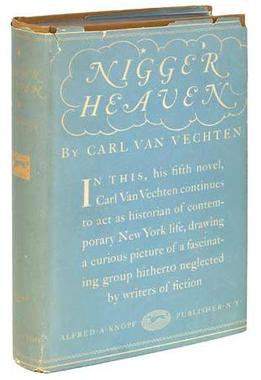
Nigger Heaven is a novel written by Carl Van Vechten, and published in October 1926. The book is set during the Harlem Renaissance in the United States in the 1920s. The book and its title have been controversial since its publication.

Niggerati was the name used, with deliberate irony, by Wallace Thurman for the group of young African-American artists and intellectuals of the Harlem Renaissance. "Niggerati" is a portmanteau of "nigger" and "literati". The rooming house where he lived, and where that group often met, was similarly christened Niggerati Manor. The group included Zora Neale Hurston, Langston Hughes, and several of the people behind Thurman's journal FIRE!!, such as Richard Bruce Nugent, Jonathan Davis, Gwendolyn Bennett, and Aaron Douglas.
African American literature is the body of literature produced in the United States by writers of African descent. It begins with the works of such late 18th-century writers as Phillis Wheatley. Before the high point of enslaved people narratives, African American literature was dominated by autobiographical spiritual narratives. The genre known as slave narratives in the 19th century were accounts by people who had generally escaped from slavery, about their journeys to freedom and ways they claimed their lives. The Harlem Renaissance of the 1920s was a great period of flowering in literature and the arts, influenced both by writers who came North in the Great Migration and those who were immigrants from Jamaica and other Caribbean islands. African American writers have been recognized by the highest awards, including the Nobel Prize given to Toni Morrison in 1993. Among the themes and issues explored in this literature are the role of African Americans within the larger American society, African American culture, racism, slavery, and social equality. African-American writing has tended to incorporate oral forms, such as spirituals, sermons, gospel music, blues, or rap.

Plum Bun: A Novel Without a Moral is a novel by Jessie Redmon Fauset first published in 1928. Written by an African-American woman who, during the 1920s, was the literary editor of The Crisis, it is often seen as an important contribution to the Harlem Renaissance.

"New Negro" is a term popularized during the Harlem Renaissance implying a more outspoken advocacy of dignity and a refusal to submit quietly to the practices and laws of Jim Crow racial segregation. The term "New Negro" was made popular by Alain LeRoy Locke in his anthology The New Negro.
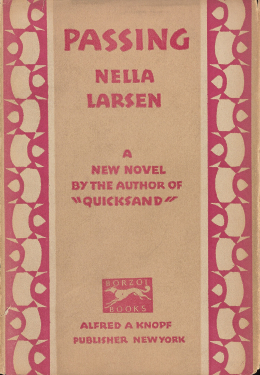
Passing is a novel by American author Nella Larsen, first published in 1929. Set primarily in the Harlem neighborhood of New York City in the 1920s, the story centers on the reunion of two childhood friends—Clare Kendry and Irene Redfield—and their increasing fascination with each other's lives. The title refers to the practice of "racial passing", which is a key element of the novel. Clare Kendry's attempt to pass as white for her husband, John (Jack) Bellew, is significant and is a catalyst for the tragic events.

Fire!! was an African-American literary magazine published in New York City in 1926 during the Harlem Renaissance. The publication was started by Wallace Thurman, Zora Neale Hurston, Aaron Douglas, John P. Davis, Richard Bruce Nugent, Gwendolyn Bennett, Lewis Grandison Alexander, Countee Cullen, and Langston Hughes. The magazine's title referred to burning up old ideas, and Fire!! challenged the norms of the older Black generation while featuring younger authors. The publishers promoted a realistic style, with vernacular language and controversial topics such as homosexuality and prostitution. Many readers were offended, and some Black leaders denounced the magazine. The endeavor was plagued by debt, and its quarters burned down, ending the magazine after just one issue.

The Harlem Renaissance was an intellectual and cultural revival of African American music, dance, art, fashion, literature, theater, politics and scholarship centered in Harlem, Manhattan, New York City, spanning the 1920s and 1930s. At the time, it was known as the "New Negro Movement", named after The New Negro, a 1925 anthology edited by Alain Locke. The movement also included the new African American cultural expressions across the urban areas in the Northeast and Midwest United States affected by a renewed militancy in the general struggle for civil rights, combined with the Great Migration of African American workers fleeing the racist conditions of the Jim Crow Deep South, as Harlem was the final destination of the largest number of those who migrated north.
Arthur Huff Fauset was an American civil rights activist, anthropologist, folklorist, and educator. Born in Flemington, New Jersey, he grew up in Philadelphia, where he attended Central High School.

"The Negro Speaks of Rivers" is a poem by American writer Langston Hughes. Hughes wrote the poem when he was 17 and crossing the Mississippi River on the way to visit his father in Mexico. It was first published the following year in The Crisis, starting Hughes's literary career. "The Negro Speaks of Rivers" uses rivers as a metaphor for Hughes's life and the broader African-American experience. It has been reprinted often and is considered one of Hughes's most famous and signature works.
George B. Hutchinson is an American scholar, Professor of Literatures in English and Newton C. Farr Professor of American Culture at Cornell University, where he is also Director of the John S. Knight Institute for Writing in the Disciplines. He is well known for his transformative work on 19th- and 20th-century American and African American literature and culture, focusing especially on the racial mores, materialistic addictions, and ecological errors of the United States. A recipient of both the NEH and Guggenheim Fellowships, he is the author of several foundational books.
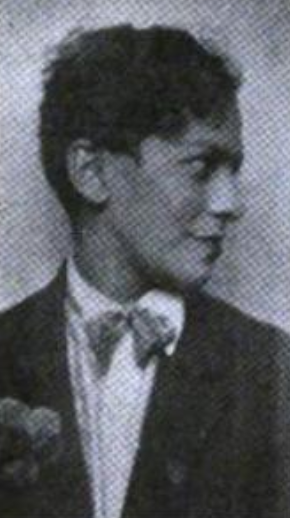
Mae Virginia Cowdery was an African-American poet based in Philadelphia, Pennsylvania. She is considered part of the wide-ranging artistic efforts inspired by the Harlem Renaissance in New York City.

Augustus Granville Dill was born in Portsmouth, Ohio. His parents were John Dill and Elizabeth Jackson. He received his B.A. from Atlanta University in 1906, received a second B.A. from Harvard in 1908, and received his M.A. in 1909 from Harvard.
Effie Lee Newsome (1885–1979), born Mary Effie Lee in Philadelphia, Pennsylvania, was a Harlem Renaissance writer. She mostly wrote children's poems, and was the first famous African-American poet whose work was mostly in this area. She edited a column in The Crisis from 1925 until 1929, called "The Little Page", where she made drawings and wrote poetry for children and parables about being young and black in the 1920s. Newsome also illustrated for children's magazines and edited children's columns for Opportunity.
The Negro in Art: How Shall He Be Portrayed? was the title of a 1926 symposium hosted on the pages of The Crisis, the magazine of the National Association for the Advancement of Colored People (NAACP). Over seven issues, various figures in American literary culture answered seven questions posed by the editors. According to scholar A.B. Christa Schwarz, the symposium's articles are an enduring resource, with relevance to "attitudes toward the black−white literary marketplace on the crucial issue of representation."
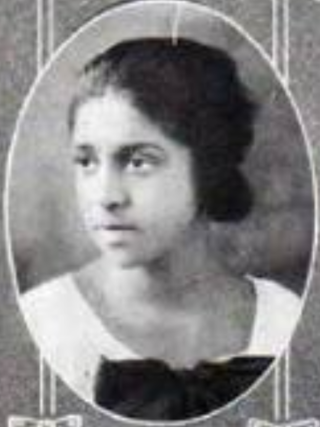
Ottie Beatrice Graham Jefferson was an American writer associated with the Harlem Renaissance cultural movement.
















